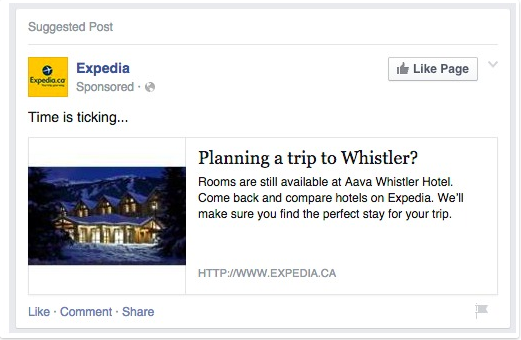Showing display banners to website visitors has been a staple of many advertisers’ digital campaigns for a while. But too often remarketing is not given the attention it deserves, and performance suffers as a result.
Whether being run in AdWords as an add-on to a PPC campaign, or through a DSP alongside brand focused prospecting activity, a remarketing campaign is a unique opportunity to reach users who you already know a lot about. This user knowledge can be harnessed to power a granular and efficient remarketing campaign. The trick is segmenting your audience.
Before we jump in to some clever ways to segment your audience, let’s address the most important rule of standard remarketing – don’t target converters.
With great power comes great responsibility. No one wants to sign up for your newsletter, buy a product from your online store, or fill in a contact form to then be bombarded with display ads telling them to do exactly what they’ve just done.
I’m sure you’ll agree it’s annoying. Excluding your converted audience is a key step in setting up a basic remarketing campaign, so don’t skip it.
Segment by Behaviour
Grouping all site visitors from the last 30 days is a built-in default for many platforms, but this should just be a starting point. To rephrase a quote from Animal Farm, “All site visitors are equal, but some site visitors are more equal than others”.
While everyone who comes to your website is valuable, there’s no denying that some are more valuable than others. A customer that browses your blog, adds multiple products to their basket, or interacts with an on-site calculator is a much warmer lead than someone who visits your homepage and exits after four seconds.
These two very different users should be remarketed to in very different ways.
If you’ve got a large or complex website, splitting your visitors into segments can seem daunting. A helpful trick is to map out a simplified path to a conversion. The below is an example for an eCommerce website, but can be adapted for different situations.

This gives four clear groups to divide website visitors into, alongside our already excluded converters. The type of website and conversion will dictate how large these groups are in comparison to each other.
If your remarketing budget is limited you may choose to focus on the segments further down the conversion funnel, where efficiency is higher. But remarketing to upper funnel segments can be made more efficient by tightening frequency caps or lowering bids. You can also use these segments to show different messaging to each user group, improving the relevancy of your display banners.

At a simple level, this can be achieved by tweaking the call-to-action: “Return to checkout” rather than “Find out more”. At the other end of the spectrum, you can make display ads ultra-relevant with dynamic remarketing from a product feed.
Segment by Time
It can be tempting to set up your audience lists with the longest membership lifespan possible, but no one wants to see ads for the winter coat they looked at six months ago. Be smart about how long you remarket site visitors for, and think about the consideration period for the product or service you’re promoting. No one thinks about buying a toothbrush for more than a day!
Go one step further and use the time since someone visited your site to dictate how you remarket to them. If they browsed garden furniture on your site earlier in the week, it’s likely they’re still in the market to buy. If they haven’t visited the garden section for over a month, they may have bought from somewhere else.
On average, the most recently added members of your remarketing audiences are more likely to revisit your site and convert. In response, focusing your remarketing budget on these newer users will increase overall efficiency. Another benefit to segmenting by time is being able to use specific messaging. Consider the following segments for your site visitors based on recency.

Using special offers and product reviews in your ads gives users more of an incentive to come back to your site. It also varies the ads they are seeing over a period of time, reducing creative wear out.
Segment by User Type
Segmenting your site visitors is possible because of the audience information you have collected. But when the data you have isn’t enough, there is a wealth of second and third-party data you can incorporate into your campaign.
In AdWords, you can split your remarketing audience by gender and age. Alternatively, you can overlay In-Market and Affinity groups to focus in on consumer behaviours that you know convert well.
When running remarketing through DoubleClick Bid Manager you can access third-party audience lists from a variety of data partners. These can be overlaid on a campaign to segment your user base by key signals such as income bracket, Mosaic group or long term online behaviours.
Enhancing your first-party data with these additional sources can help you focus in on specific user groups and give you even greater control over how you communicate with different audiences.
In Summary…
Track what pages of your site people are visiting and show them relevant banners based on the content they have consumed.
In remarketing, as in life, timing is everything, so show your audience the right message at the right time.
Plug the gaps in your user knowledge with second and third-party data.
These three segmentation ideas are just a starting point when it comes to re-engaging your site visitors with display advertising.
For more information about how to get the most out of your remarketing campaigns get in contact with one of our account managers at hello@search-star.co.uk >>>